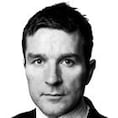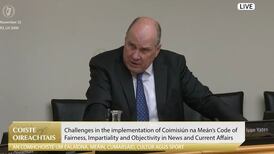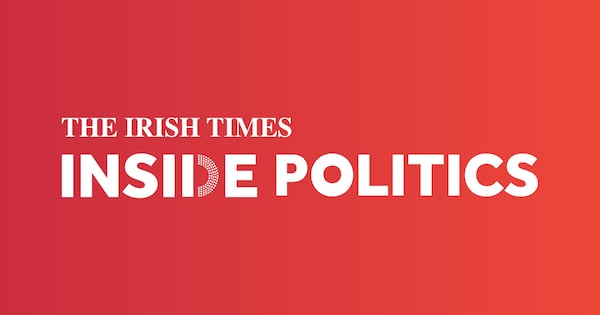Heather Humphreys
Who is she?
She retired in November 2024 after 13 years in the Dáil, 10 of which she spent as a senior minister. Born in 1963, she lives in Newbliss, Co Monaghan, and was a bank official and credit union manager before becoming a TD. She is a Presbyterian.
Humphreys had an unsteady start as the new minister for arts in 2014 after being catapulted into the role from the backbenches by then-taoiseach Enda Kenny.
Her political naivety showed in her poor handling of a controversy over the party’s backing of a Donegal businessman and Fine Gael activist in a byelection to fill a vacancy in Seanad Éireann. Despite having no experience in the area, John McNulty was appointed to the board of the Irish Museum of Modern Art so he could show he was a qualified person for the Seanad’s cultural panel.
It was a ready-up, and Humphreys, as arts minister, had to deal with the flak. She floundered in the early interviews.
READ MORE
She learned a lesson from that and never repeated the mistake, being careful and prepared in all subsequent public interviews.
Over time, Humphreys became an indispensable ally to three taoisigh: Kenny, Leo Varadkar and Simon Harris. Her ministries were in areas where she had a strong suit. She was minister for enterprise during Brexit and had to work to ensure the North-South hard border did not re-emerge. She was minister for social protection during Covid. Her other brief in rural and community affairs saw her visit virtually every community in the country.
Strengths
Humphreys is one of the few Fine Gael politicians who is popular across party lines. Her time in the rural affairs brief has made her a familiar figure in virtually every hamlet in the State. That popularity is reflected in the fact that three Independent Ministers – all from the Fianna Fáil gene pool – have backed her. They are Michael Healy-Rae, Seán Canney and Noel Grealish.
Fine Gael candidates have not traditionally had a broad appeal, but there is hope that Humphreys, like Mairéad McGuinness, can change that. That she is a border politician and member of a minority religion would be a boon for North-South relations. From a republican perspective, she was the minister who oversaw the successful Decade of Centenaries, including the commemoration of the 1916 Rising.
Potential weaknesses
Opposition parties have zeroed in on her role in Enda Kenny’s “austerity” government and her policies when minister for social welfare that affected people with disabilities. She told two reporters from the Ditch to f*** off outside her constituency office. That is similar to Michael D Higgins using an expletive during a radio row with a right-wing American commentator, when he was still a TD. It’s not something that will affect her chances.
She would be seen by others as an old-school, establishment and veteran Fine Gael grandee even though she is 10 years younger than Seán Kelly, and six years younger than Catherine Connolly.
Having had an antagonistic political relationship with Sinn Féin during her Dáil career, Humphreys would need to convince its supporters she would represent them while not sharing their views.
She is associated with rural Ireland and may struggle to attract non-Fine Gael votes in Dublin. Her Irish language skills are poor.
Possible political banana skin?
No particular skeletons in the cupboard. She is seen as a “safe pair of hands” and is unlikely to take risks or push boundaries in the same way Higgins has done. Some voters may look for more “vision” for the presidency and find her to be too conventional a candidate.
Seán Kelly
Who is he?
Seán Kelly is now 73 but the Kerryman is still an energetic presence in Irish politics. A former schoolteacher in St Brendan’s Killarney, he came to national prominence as a GAA administrator, first in Kerry and then nationally before making the transition into politics.
He has been involved in GAA administration since his 20s, first in Kerry, then in Munster. He was elected president of the GAA in 2003, the first person from Kerry to hold the office.
His greatest achievement during his term was overseeing the change to Rule 42, which prohibited the playing of non-Gaelic games in GAA stadiums. It paved the way for rugby internationals and soccer internationals to be played in Croke Park from 2007.
[ The presidency is not a Rose of Tralee contest for over-35sOpens in new window ]
Fine Gael made a number of approaches to him before he accepted an invitation to stand for the party in the European elections in 2009. It followed a trend of parties, particularly Fine Gael, seeking high-profile candidates outside conventional politics to become candidates. His Fine Gael EU parliamentary colleagues Mairéad McGuinness and Maria Walsh came into politics in the same way.
Kelly’s candidacy put some noses out of joint internally in Fine Gael. Simon Coveney had been elected to the parliament in 2004 but stood down in 2007, being replaced by Colm Burke. Supporters of Burke were resistant to a two-candidate strategy. In the event, Kelly finished second to Brian Crowley, winning almost 20 per cent of the vote. He has performed strongly in the three subsequent elections.
Strengths?
Kelly’s great strengths are as an organiser, networker and communicator, as well as his willingness to travel far and wide. He is a very active politician in Brussels and the constituency. His extensive GAA experience, especially in Munster, has given him a strong base and network of support, outside of Fine Gael. He is a fluent Irish speaker and often speaks as Gaeilge in parliament. He has had a special interest in energy policy.
Weaknesses?
He could be considered too Munster. While amassing an impressive 123,000 votes in last year’s European election, his appeal outside his southwest base is limited. Having spent his entire career as an MEP, it has put him at a disadvantage with parliamentary colleagues based in Leinster House, who would have closer connections to Heather Humphreys. Both of those factors are reflected in his struggle to reach the threshold of 20 parliamentary nominations, where most of his backers are Munster-based. Having demonstrated in his GAA career that he is a moderniser, he is nevertheless seen as a traditional Fine Gael politician in terms of outlook.
Possible political banana skin?
Some controversies from his time in the EU parliament. He was one of four Fine Gael MEPs, including Mairéad McGuinness, who voted against a non-binding motion in parliament that proposed increasing, improving and better organising search-and-rescue missions for migrants and refugees setting out in boats from North Africa to cross the Mediterranean.
He defended the stance saying that, under the proposal, people traffickers could have gained access to information being shared by rescuers.
“It would lead to more lives being lost and more money for people smugglers who would now have carte blanche to do what they like,” he said at the time.











